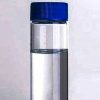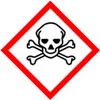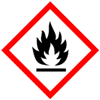1 Bromo 3 chloropropane or Trimethylene chlorobromide Manufacturers, with SDS GHS MSDS Sheet |
Supplier, Manufacturer, Exporter of 1 Bromo 3 chloropropane or Trimethylene chlorobromide, Muby Chemicals of Mubychem Group, established in 1976, is the original manufacturers of Specialty Chemicals, Pharmaceutical Excipient, Fragrance Food & Flavor chemicals, Reagent Grade Chemicals, Shale Gas Fracturing Chemicals in India. Mubychem Group has several manufacturing facilities spread across Western India and world wide contacts and toll manufacturers. We are exporting globally to countries like USA, Canada, Europe, UAE, South Africa, Tanzania, Kenya, Egypt, Nigeria, Cameroon, Uganda, Turkey, Mexico, Brazil, Chile, Argentina, Dubai, Korea, Vietnam, Thailand, Malaysia, Indonesia, Australia, China, Germany, France, Italy, Portugal, Bangladesh, etc. The products are offered as per required specifications and in correct shape and size in mm or meshs or microns as specified by the buyer. The participating units have one or more accreditations like FDA - cGMP and GLP approval, ISO-9001 Certified, "REACH" Registered, ISO-14001, ISO/IEC 17025, ISO-22000, FSSC 22000, ISO 45001, Kosher Certified, Halal Certified, HACCP, FSSAI. We offer Commercial Pure & IP BP EP Ph Eur USP NF JP FCC Food Grade Analytical Reagent Grades of Chemicals |
| Bookmark this Web Site -- or -- Email This Page Info to a Colleague or Yourself |
Search our website here:







1 Bromo 3 chloropropane or Trimethylene chlorobromide: CAS Number: 109-70-6, EINECS EC Number: 203-697-1, Molecular Formula: C3H6BrCl or Cl(CH2)3Br, Molecular Weight: 157.44, HS Code ---**
How big is your requirement or how small
We serve it all.
Specifications, Manufacturing process details, Wholesale retail prices, Uses etc available on these pages for 1 Bromo 3 chloropropane or Trimethylene chlorobromide.
For SDS MSDS Sheet Click
SDS MSDS Sheet of 1 Bromo 3 chloropropane or Trimethylene chlorobromide Manufacturers
1 Bromo 3 chloropropane
Trimethylene chlorobromide Pure Suppliers

1-Bromo, 3-Chloropropane is also known as Propane, 1-bromo-3-chloro-, Trimethylene chlorobromide, 1-Chloro-3-bromopropane, 3-Bromopropyl chloride, 3-Chloropropyl bromide. 1 Bromo 3 chloropropane or Trimethylene chlorobromide is used as intermediate to manufacture surfactant, pharmaceuticals etc.
Specifications of 1 Bromo 3 Chloropropane or Trimethylene chlorobromide:
CAS number: 109-70-6
Molecular formula: C3H6BrCl or Cl(CH2)3Br
Molecular weight: 157.44
Solubility: Insoluble in water, soluble in alcohol and ether.
Relative Density: 1.58 to 1.60
Boiling Point: 143C to145C
Appearance: Clear colorless liquid
Moisture Content: 0.2% maximum
Impurities: 1% maximum
Assay: 99% minimum.
We manufacture and supply the entire range of bromine based organic chemicals and inorganic bromide chemicals:
4-Bromo-2, 2-Diphenylbutyronitrile
1,3 Dibromo 5,5 Dimethylhydantoin
1,3-Dichloro-5,5-Dimethylhydantoin
Ethyl Triphenyl Phosphonium Bromide
Methyl Triphenyl Phosphonium Bromide
We also supply several inorganic bromides and bromates.
Manufacturers:
MUBY CHEMICALS
Ambernath Mumbai, Ankleshwar Gujarat, India
TEL: (OFFICE) +912223770100, +912223726950
Current Date Time in India GMT+5:30
e-mail: info@mubychem.com
USA, Canada, Mexico and other American
neighbouring buyers may
e-mail: us@mubychem.com
Call toll-free 1-877-682-9243 (1-877-MUBYCHEM)

Copyright and Usual Disclaimer is Applicable.
Last
30 March, 2024




Exporters to USA Canada UAE Europe South Africa Tanzania Kenya Uganda Egypt Nigeria Turkey Mexico Brazil Argentina Chile Dubai etc.
Global or International Suppliers, Exporters, Importers, Manufacturers
I shall pass through this world, but once. If therefore, there is any good that I can do, or if there is any favor that I can show to a fellow human being, let me do it now. Let me not defer or neglect it. For I shall not tread this way again
1 Bromo 3 chloropropane or Trimethylene chlorobromide SDS, Safety Data Sheet
MSDS Sheet, Material Safety Data Sheet 26-Nov-20
Section 1: Product and Company Identification
Product Name & Other Names: 1 Bromo 3 chloropropane or Trimethylene chlorobromide.
CAS No.: 109-70-6
EINECS, EC Number: 203-697-1
Molecular Weight: 157.44
Chemical Formula: C3H6BrCl or Cl(CH2)3Br
Relevant uses and uses advised against (if any):: Laboratory chemicals, Manufacture of substances
Supplier: As per letterhead.
Section 2: Hazards Identification
GHS, Globally Harmonized System Classification in accordance with 29 CFR 1910
Classification according to Regulation (EC) No 1272/2008
Flammable liquids (Category 3), H226
Acute toxicity, Oral (Category 4), H302
Acute toxicity, Inhalation (Category 3), H331
Specific target organ toxicity - single exposure (Category 3), Respiratory system, H335
Long-term (chronic) aquatic hazard (Category 3), H412
Labeling according to GHS & Regulation (EC) No 1272/2008
GHS Label Elements  Toxic |
GHS Label Elements |
GHS Label Elements |
Signal Words: Danger
Hazard statements:
H226: Flammable liquid and vapour.
H302: Harmful if swallowed.
H331: Toxic if inhaled.
H335: May cause respiratory irritation.
H412: Harmful to aquatic life with long lasting effects.
Precautionary statements:
P202: Do not handle until all safety precautions have been read and understood.
P210: Keep away from heat, hot surfaces, sparks, open flames, and other ignition sources. No smoking.
P260: Do not breathe dust/fume/gas/mist/vapors/spray.
P264 Wash thoroughly after handling.
P270: Do not eat, drink or smoke when using this product.
P271: Use only outdoors or in a well-ventilated area.
P273: Avoid release to the environment.
P280: Wear protective gloves/protective clothing/eye protection/face protection.
P285: In case of inadequate ventilation wear respiratory protection.
P330 : Rinse mouth
P301+P312: IF SWALLOWED: Call a POISON CENTER or doctor/ physician if you feel unwell.
P302+P352: IF ON SKIN: Wash with plenty of soap and water.
P304+341+311: IF INHALED: Remove person to fresh air and keep comfortable for breathing. Call a POISON CENTER/doctor.
P305+P351+P338: IF IN EYES: Rinse cautiously with water for several minutes. Remove contact lenses, if present and easy to do. Continue rinsing.
P308+313: IF exposed or concerned: Get medical advice/attention.
P342+311: If experiencing respiratory symptoms: Call a POISON CENTER or doctor/physician.
P391: Collect spillage.
P403 + P233: Store in a well-ventilated place. Keep container tightly closed.
P501: Dispose of contents/container in accordance with local/regional/national/international regulation.
Classification according to EU Directives 67/548/EEC or 1999/45/EC:
Hazard Symbols:
F Flammable.
T Toxic.
Xn Harmful.
Risk Phrases:
R10 Flammable
R22 Harmful if swallowed.
R23 Toxic by inhalation.
R37 Irritating to respiratory system.
R53 May cause long-term adverse effects in the aquatic environment.
Section 3: Composition / Information on Ingredients
Product Name & Other Names: 1 Bromo 3 chloropropane or Trimethylene chlorobromide.
CAS No.: 109-70-6
EINECS, EC Number: 203-697-1
Molecular Weight: 157.44
Section 4: First Aid Measures
Always seek medical attention after first aid measures are provided.
Eyes: Immediately flush eyes with excess water for 15 minutes, lifting lower and upper eyelids occasionally.
Skin: Immediately flush skin with excess water for 15 minutes while removing contaminated clothing.
Ingestion: Call Emergency Medical immediately. Rinse mouth with cold water. Give victim 1-2 cups of water or milk to drink. Induce vomiting immediately.
Inhalation: Remove to fresh air. If not breathing, give artificial respiration.
Section 5: Fire Fighting Measures
It is flammable liquid. When heated to decomposition, emits fumes. Avoid contamination with oxidizing agents.
Protective equipment and precautions for firefighters: Firefighters should wear full fire fighting turn-out gear and respiratory protection. Cool container with water spray.
Special hazards arising from the substance: Carbon oxides, Hydrogen bromide, Hydrogen chloride and Toxic fumes.
Suitable fire fighting medium: Use water spray, dry sand, foam or dry chemical or carbon dioxide to extinguish fire. Use water spray to cool unopened containers.
Special Information: In the event of a fire, wear full protective clothing and NIOSH-approved self-contained breathing apparatus with full face piece operated in the pressure demand or other positive pressure mode. At high temperatures under fire conditions, it may produce toxic or irritating fumes. Fire-extinguishing work is done from the windward and the suitable fire-extinguishing method according to the surrounding situation is used. Uninvolved persons should evacuate to a safe place.
Section 6: Accidental Release Measures
Personal precautions, protective equipment, and emergency procedures: Avoid breathing dust/fumes/gas/mist/vapors/spray. Use individual protective equipment (waterproof boots, suitable protective clothing, safety glasses, etc.). Restrict unprotected personnel from the area. Prevent any contact with hot surfaces. Do not approach facing the wind. Do not touch the spilled material.
Environmental precautions: Do not let the product enter drains, soil, or water sources.
Methods and materials used for containment Cleanup procedures and Storage: Do not inhale dust, vapors, mist, or gas. Avoid dust formation. Contain spilled material. Cover with an inert, non-combustible absorbent material, (e.g. sand, earth, diatomaceous earth, vermiculite). Use a shovel to put the material into a convenient waste disposal container. Finish cleaning by spreading water on the contaminated surface and allow to evacuate as per law. Remove all ignition sources. Take precautionary measures against static discharges.
Section 7: Handling and Storage
Precautions for safe handling: Apply according to good manufacturing and industrial hygiene practices. Ensure proper ventilation. In case of insufficient ventilation, wear suitable respiratory equipment. Wash thoroughly after handling. Do not drink, eat, or smoke while handling. Avoid contact with skin, eyes, and clothing. Minimize dust generation. Avoid breathing dust/fumes/gas/mist/vapors/spray. Avoid contact with eyes, skin, and clothing. Keep container tightly closed. Avoid ingestion and inhalation. Use individual protective equipment (waterproof boots, suitable protective clothing, safety glasses, etc.). Prevent any contact with hot surfaces.
Conditions for safe storage, including any incompatibilities: Store in cool, dry, and ventilated area away from heat sources and protected from sunlight in tightly closed original container. Keep air contact to a minimum. Store protected from heat, sparks and ignition sources and incompatible materials. Avoid contact with skin and eyes. Avoid inhalation of dust/mist/vapor. Do not store with incompatible materials like magnesium, strong oxidizing agents and strong bases.
Section 8: Exposure Controls / Personal Protection
Exposure guidelines: Contains no components with established occupation exposure limits.
Ventilation System: A system of local and/or general exhaust is recommended to keep employee exposures as low as possible. Local exhaust ventilation is generally preferred because it can control the emissions of the contaminant at its source, preventing dispersion of it into the general work area.
Personal Respirators (NIOSH Approved): For conditions of use where exposure to dust or mist is apparent and engineering controls are not feasible, a particulate respirator may be worn. For emergencies or instances where the exposure levels are not known, use a full-face positive-pressure, air-supplied respirator.
Skin Protection: Wear protective gloves and clean body-covering clothing.
Eye Protection: Use chemical safety goggles and/or full face shield where dusting or splashing of solutions is possible. Maintain eye wash fountain and quick-drench facilities in work area.
Other Control Measures: Maintain good housekeeping in work area. Dust deposits on floors and other surfaces may pick up moisture and cause the surfaces to become slippery and present safety hazards. Handle in accordance with good industrial hygiene and safety practice. Wash hands after handling.
Section 9: Physical and Chemical Properties
Physical state and appearance: Clear colorless liquid.
Odor: Mild.
Odor threshold: Not available.
pH: Not available.
Relative density: about 1.58 to 1.60
Boiling Point: 143C to145C
Melting Point: -59C literature.
Flash Point: 81C
Auto-ignition temperature: Not available.
Decomposition temperature: Not available.
Upper/lower flammability or explosive limits: Not available.
Vapor pressure: Not available.
Vapor density: Not available.
Evaporation rate: Not available.
Flammability (solid, gas): Not available.
Partition coefficient: n-octanol/water: Not available.
Solubility: Practically insoluble in water, soluble in alcohol and ether.
Viscosity: Not available.
Molecular Weight: 157.44
Chemical Formula: C3H6BrCl or Cl(CH2)3Br
Section 10: Stability and Reactivity
Avoid heat and ignition sources.
Stability: Stable under normal conditions of use and storage.
Incompatibility: Heat, spark, flame, magnesium, strong oxidizing agents and strong bases.
Hazardous Decomposition Products: Carbon oxides, Hydrogen bromide, Hydrogen chloride and Toxic fumes.
Hazardous Polymerization: Has not been reported.
Section 11: Toxicology Information
LD50 oral, rat: >1100 mg/kg.
LC50 Inhalation, Rat - male: 4 h - 6,5 mg/l.
LD50 Dermal, Rat: > 2.000 mg/kg.
Carcinogenicity: Not listed as by IARC, NTP, OSHA.
Reproductive toxicity: Not available.
Germ cell mutagenicity: Not available.
To the best of our knowledge, the chemical, physical, and toxicological properties have not been thoroughly investigated.
Section 12: Ecological Information
Toxicity to fish: LC50 - Oryzias latipes (Orange-red killifish) - 53,2 mg/l - 48 h.
Toxicity to daphnia and other aquatic invertebrates: EC50 - Daphnia magna (Water flea) - 55,9 mg/l - 48 h.
Ecotoxicity (aquatic and terrestrial): Harmful to terrestrial and aquatic plants and animals. Do not release to environment.
Persistence and degradability: No data available.
Results of PBT and vPvB assessment: No data available.
Mobility in soil: No data available.
Section 13: Disposal Considerations
Check with all applicable local, regional, and national laws and regulations.
Section 14: Transport Information
DOT USA, TDG Canada & ADR/RID Europe:
UN-No: UN2688
Proper Shipping Name: 1-BROMO-3-CHLOROPROPANE.
Hazard Class: 6.1; Packing Group: III
IATA/ICAO:
UN-No: UN2688
Proper Shipping Name: 1-BROMO-3-CHLOROPROPANE.
Hazard Class: 6.1; Packing Group: III
IMDG/IMO:
UN-No: UN2688
Proper Shipping Name: 1-BROMO-3-CHLOROPROPANE.
Hazard Class: 6.1; Packing Group: III
Section 15: Regulatory Information
USA:
SARA 311/312 Hazard Categories: Fire Hazard, Acute Health Hazard, Chronic Health Hazard. See section 2.
SARA 313: Not applicable
California Proposition 65: Not listed.
Section 16: Other Information
European Labeling in Accordance with EC Directives:
H226: Flammable liquid and vapor.
H302: Harmful if swallowed.
H331: Toxic if inhaled.
H335: May cause respiratory irritation.
H412: Harmful to aquatic life with long lasting effects.
Hazard Symbols:
F Flammable.
T Toxic.
Xn Harmful.
Risk Phrases:
R10 Flammable
R22 Harmful if swallowed.
R23 Toxic by inhalation.
R37 Irritating to respiratory system.
R53 May cause long-term adverse effects in the aquatic environment.
Disclaimer:
**************************
Our company provides this MSDS sheet in good faith but makes no representation as to its comprehensiveness or accuracy. This SDS sheet is intended only as a guide to the appropriate precautionary handling of the material by a properly trained person using this product. The above information has been compiled from various sources and has the possibility of discrepancy and being out-dated information. Individuals receiving the information must exercise their independent judgment and do further search in determining its appropriateness for a particular purpose. In no case shall our company be liable to loss or damages by the product user.
**************************

















